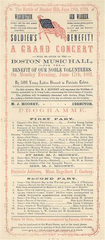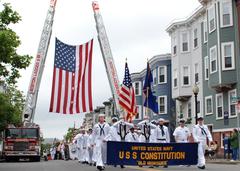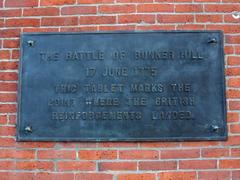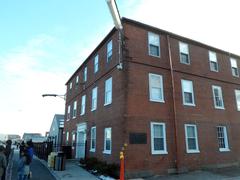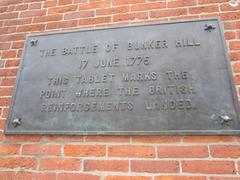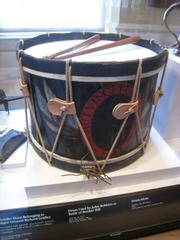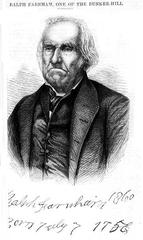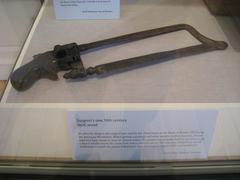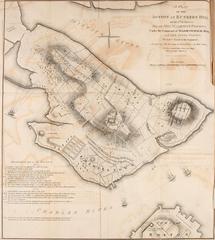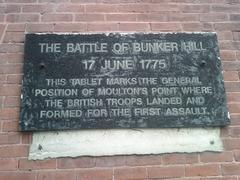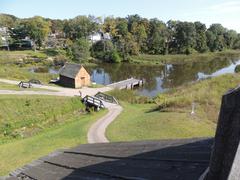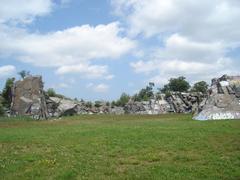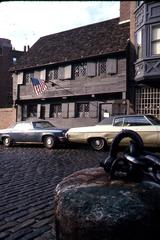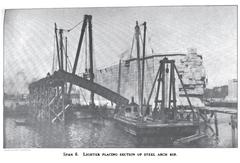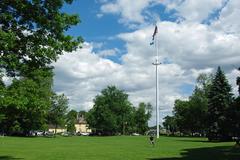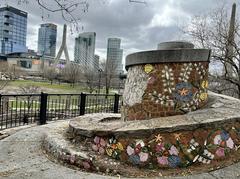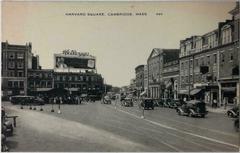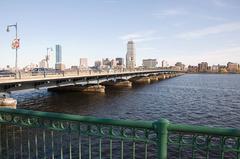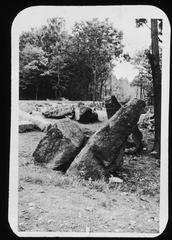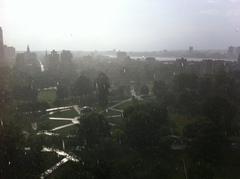
Visiting The Battle of Bunker Hill Museum: Hours, Tickets, and Tips
Date: 31/07/2024
Overview of The Battle of Bunker Hill Museum
The Battle of Bunker Hill Museum, located in Charlestown, Boston, is a significant landmark that commemorates one of the most pivotal battles in American history—the Battle of Bunker Hill. This historical site offers visitors a unique opportunity to delve into the rich heritage of the American Revolutionary War. The museum, along with the towering Bunker Hill Monument, stands as a tribute to the bravery and resilience of the American forces who fought on June 17, 1775. The battle, despite being a tactical victory for the British, proved to be a critical morale booster for the American forces, demonstrating their capability to stand against the professional British army (NPS).
The Bunker Hill Monument, a 221-foot granite obelisk completed in 1843, and the adjacent museum provide a comprehensive exploration of the battle’s history, its impact, and the broader context of the Revolutionary War. Visitors can climb the monument’s 294 steps for panoramic views of Boston or explore the museum’s exhibits, which include dioramas, artifacts, and interactive displays (Wikipedia). This guide aims to provide an in-depth look at the Battle of Bunker Hill Museum, offering practical information on visiting hours, ticketing, and tips to enhance your visit.
Table of Contents
- [Introduction](#introductionintroduction)
- [The Prelude to Battle](#the-prelude-to-battlethe-prelude-to-battle)
- [The Battle Unfolds](#the-battle-unfoldsthe-battle-unfolds)
- [Casualties and Aftermath](#casualties-and-aftermathcasualties-and-aftermath)
- [Commemoration and Legacy](#commemoration-and-legacycommemoration-and-legacy)
- [The Bunker Hill Museum](#the-bunker-hill-museumthe-bunker-hill-museum)
- [Annual Commemorations](#annual-commemorationsannual-commemorations)
- [Visitor Tips](#visitor-tipsvisitor-tips)
- [Frequently Asked Questions](#frequently-asked-questionsfrequently-asked-questions)
- [Conclusion](#conclusionconclusion)
Introduction
The Bunker Hill Monument stands as a towering tribute to one of the most pivotal battles in American history, the Battle of Bunker Hill. This historical site not only commemorates the bravery and resilience of the American forces but also offers visitors a chance to explore the rich heritage of Charlestown. This guide provides a comprehensive overview of the monument’s history, visiting hours, ticketing information, and practical tips to enhance your visit.
The Prelude to Battle
The Battle of Bunker Hill, fought on June 17, 1775, was a pivotal early conflict in the American Revolutionary War. The battle took place on the Charlestown Peninsula, across the Charles River from Boston. The American forces, composed of soldiers from Massachusetts, Connecticut, and New Hampshire, faced the British army for the first time in a pitched battle. The Americans had learned that the British planned to occupy the hills surrounding Boston, prompting them to fortify Breed’s Hill, mistakenly believing it to be Bunker Hill (National Park Service).
The Battle Unfolds
On the morning of June 17, British forces under the command of Major General William Howe began their assault. The American forces, led by Colonel William Prescott, had constructed a redoubt on Breed’s Hill. As the British troops advanced, Prescott is famously quoted as instructing his men, “Don’t fire until you see the whites of their eyes,” a command aimed at conserving their limited ammunition (Boston Tea Party Ships & Museum).
The British launched three major assaults on the American positions. The first two assaults were repulsed with heavy British casualties. However, during the third assault, the British forces managed to breach the American defenses, primarily due to the Americans running out of ammunition. Despite the British victory, the battle inflicted significant casualties on their forces, with nearly 1,000 of the 2,400 British soldiers and Marines engaged being wounded or killed (History.com).
Casualties and Aftermath
The Battle of Bunker Hill was one of the bloodiest battles of the American Revolution. The British suffered 1,054 casualties, including 89 officers, while the American forces incurred around 450 casualties, including the death of General Joseph Warren, a prominent leader who had volunteered to fight in the redoubt (Britannica).
Despite losing their strategic positions, the battle was a significant morale booster for the American forces. It demonstrated that the colonial militia could stand up to the professional British army, instilling confidence and determination in the American cause. The high cost of the British victory also made it clear that the war would be long and costly (History.com).
Commemoration and Legacy
The significance of the Battle of Bunker Hill has been commemorated in various ways over the years. The first monument on Breed’s Hill was a wooden pillar dedicated to Dr. Joseph Warren, installed in 1794. However, it was later decided to create a more permanent memorial. On June 17, 1825, the cornerstone for the Bunker Hill Monument was laid, with notable figures such as General Marquis de Lafayette and statesman Daniel Webster leading the ceremony. The monument, a 221-foot granite obelisk, was completed in 1843 and stands as a tribute to those who fought and died in the battle (National Park Service).
The Bunker Hill Museum
Located across the street from the Bunker Hill Monument, the Bunker Hill Museum houses exhibits that tell the story of the battle and its commemoration, as well as the history of the Charlestown community. The museum features a 360-degree cyclorama mural of the battle, refurbished dioramas, artifacts, and a bookstore. Visitors can also explore a model of the Bunker Hill battlefield, complete with an audio presentation that discusses the battle (National Park Planner).
Annual Commemorations
The National Parks of Boston and various partners host annual events to commemorate the Battle of Bunker Hill. These events include the Bunker Hill Parade, a Luminary Gathering of Remembrance, and the Battle of Bunker Hill Remembrance Ceremony & Oration. These programs are free and open to the public, ensuring that the legacy of the battle is passed on to future generations (National Park Service).
Visitor Tips
For those planning to visit the Bunker Hill Monument and Museum, here are some essential tips:
- Admission: Both the monument and the museum offer free admission. No tickets are required.
- Hours: The museum is typically open from Wednesday to Sunday, with hours varying by season. It is advisable to check the National Park Service’s official website for the current schedule.
- Climbing the Monument: Visitors can climb the 294 steps to the top of the monument for panoramic views of Boston. There are no elevators, but multiple 360° live cameras at the top provide views for those unable to make the climb (My Wanderlusty Life).
- Accessibility: While the monument itself is not accessible to those with mobility impairments due to the lack of elevators, the museum offers accessible exhibits and amenities.
- Nearby Attractions: After visiting the monument, consider stopping by the historic Warren Tavern, built in 1780, which has served notable figures such as George Washington and Paul Revere (My Wanderlusty Life).
Frequently Asked Questions (FAQ)
Q: What are the visiting hours for the Bunker Hill Monument? A: The monument is open daily, but hours may vary by season. It is best to check the National Park Service’s official website for current hours.
Q: Are there any tickets required to visit the Bunker Hill Monument and Museum? A: No, both the monument and the museum offer free admission.
Q: How many steps are there to the top of the Bunker Hill Monument? A: There are 294 steps. There are no elevators, but live cameras at the top provide views for those unable to make the climb.
Q: What other historical sites are nearby the Bunker Hill Monument? A: Nearby attractions include the historic Warren Tavern and other sites along the Freedom Trail in Charlestown.
Conclusion
The Battle of Bunker Hill remains a symbol of American resilience and determination. The monument and museum serve as important educational resources, preserving the memory of this critical moment in American history for future generations. Whether you’re a history enthusiast or a casual visitor, the Bunker Hill Monument offers a fascinating glimpse into America’s past. Plan your visit today and step back into history.
Call to Action
Don’t miss out on other historical adventures! Download the Audiala app for more travel tips and updates, and follow us on social media for the latest news and events.
References
- National Park Service, 2024, NPS
- Boston Tea Party Ships & Museum, 2024, Boston Tea Party Ships & Museum
- History.com, 2024, History.com
- Britannica, 2024, Britannica
- National Park Planner, 2024, National Park Planner
- My Wanderlusty Life, 2024, My Wanderlusty Life
- Wikipedia, 2024, Wikipedia
